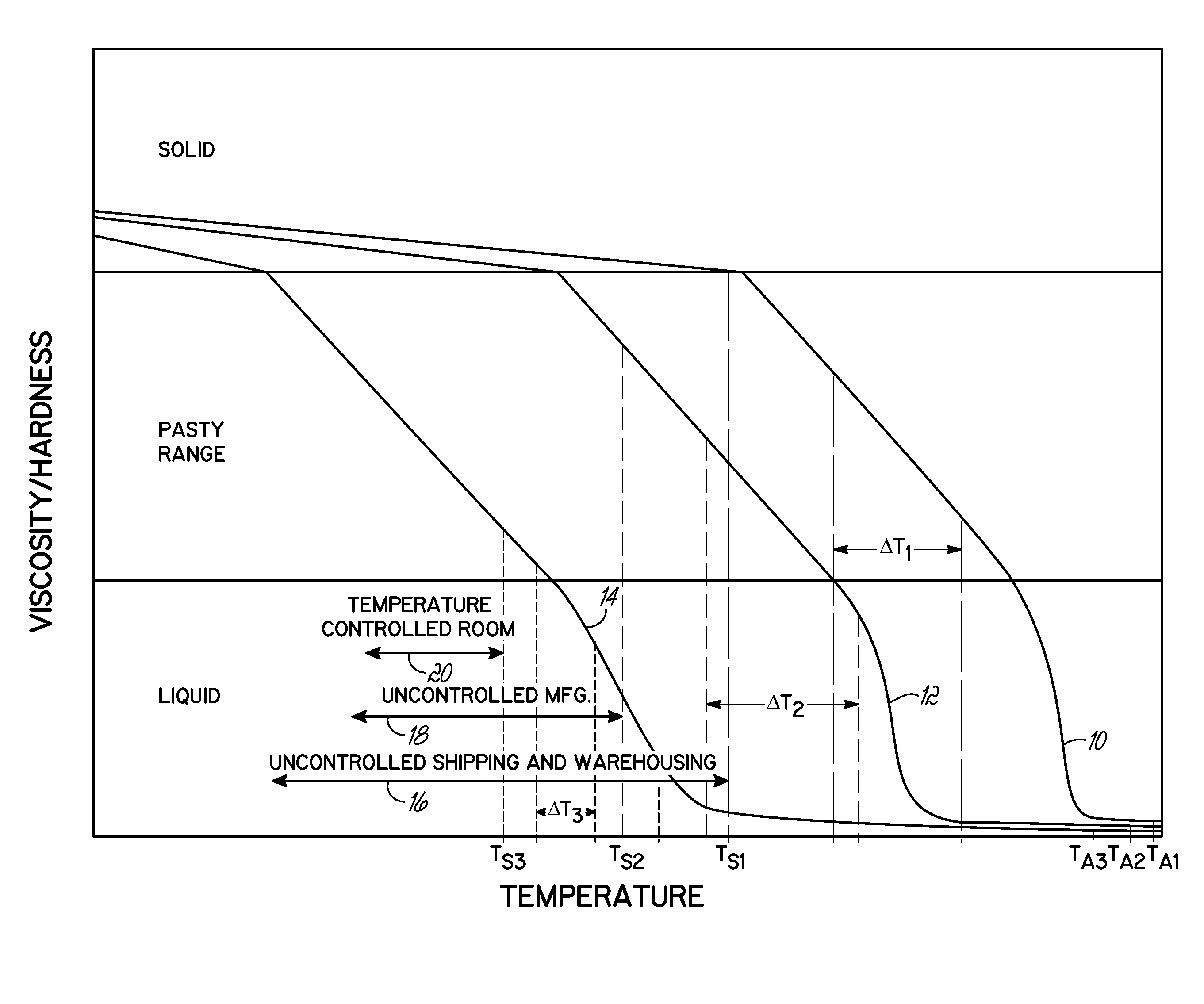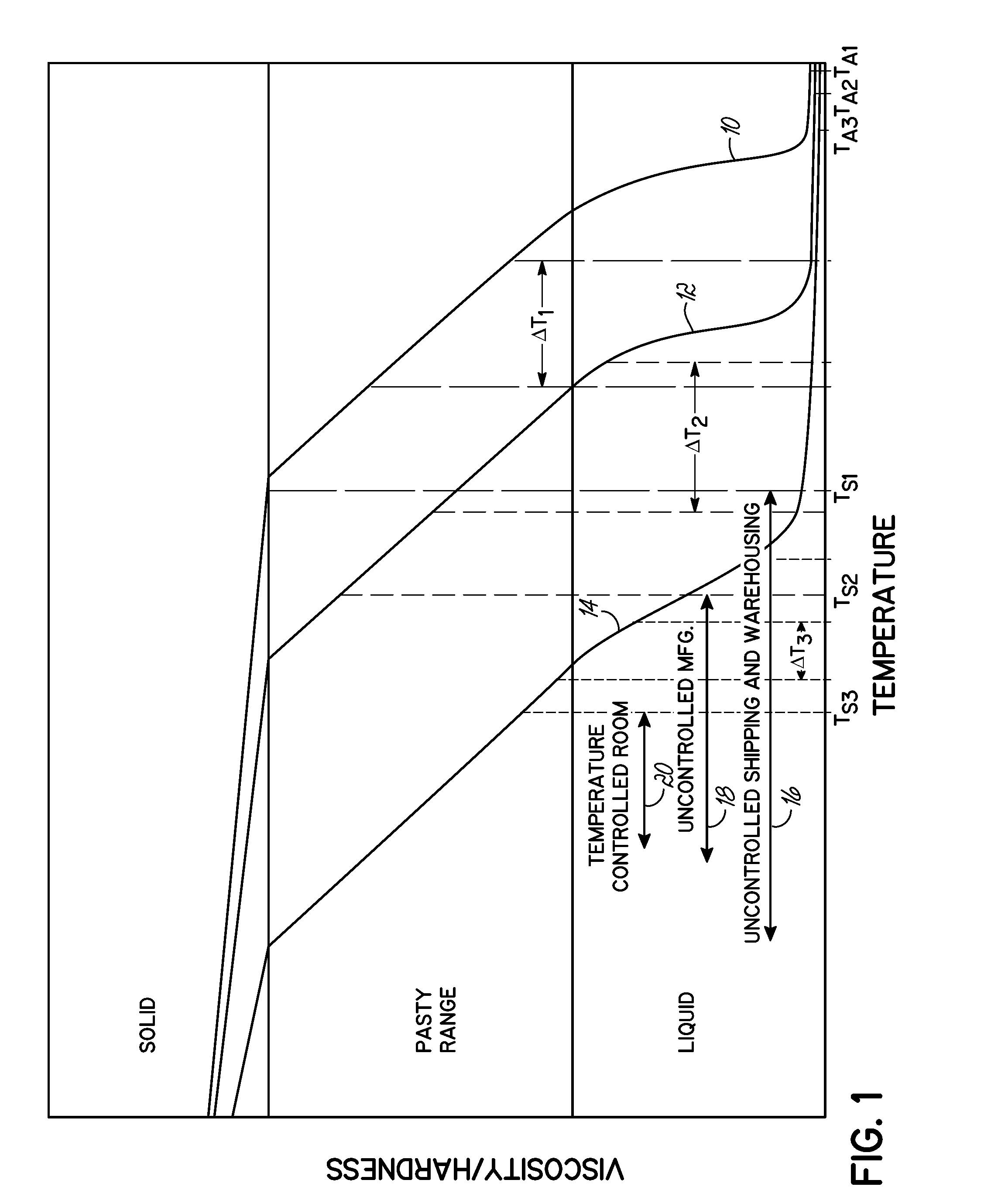Flux and solder material and method of making same
- Summary
- Abstract
- Description
- Claims
- Application Information
AI Technical Summary
Benefits of technology
Problems solved by technology
Method used
Image
Examples
example
[0047]A flux that is solid at room temperature was prepared. The flux contained 80 wt. % partially hydrogenated rosin having a softening temperature of approximately 80° C. and an acid value of 150-170, 15 wt. % polyethylene glycol 1450, 2.5 wt. % azelaic acid, and 2.5 wt. % stearic acid.
[0048]A solder material was prepared by dispersing solder particles in the above flux. The solder material contained 85 wt. % solder particles of 96.5Sn-3Ag-0.5Cu alloy with the above flux forming the balance of the solder material. At 22° C., the solder material was solid. The deposition temperature range was roughly 45° C. to 60° C. The activation temperature was approximately 95° C.
[0049]In another embodiment, a method of making the flux includes heating the primary solids constituent to a liquid state. While the primary solids constituent is in the liquid state, the one or more secondary constituents are added to form a flux mixture. The flux mixture is cooled to a temperature at or below the ma...
PUM
| Property | Measurement | Unit |
|---|---|---|
| Temperature | aaaaa | aaaaa |
| Temperature | aaaaa | aaaaa |
| Temperature | aaaaa | aaaaa |
Abstract
Description
Claims
Application Information
 Login to view more
Login to view more - R&D Engineer
- R&D Manager
- IP Professional
- Industry Leading Data Capabilities
- Powerful AI technology
- Patent DNA Extraction
Browse by: Latest US Patents, China's latest patents, Technical Efficacy Thesaurus, Application Domain, Technology Topic.
© 2024 PatSnap. All rights reserved.Legal|Privacy policy|Modern Slavery Act Transparency Statement|Sitemap


